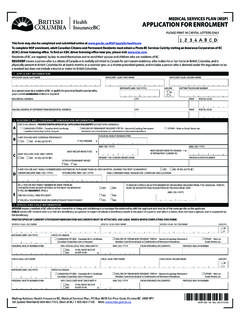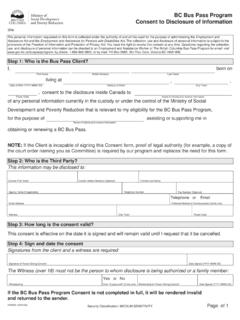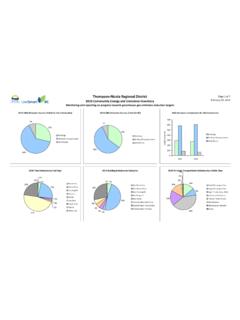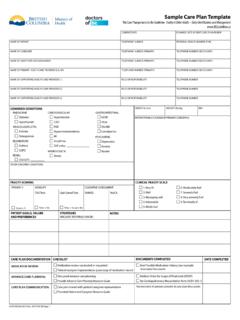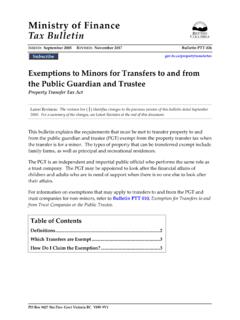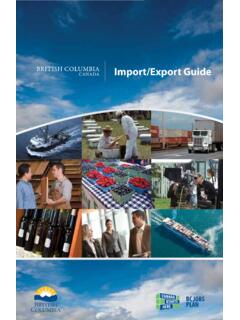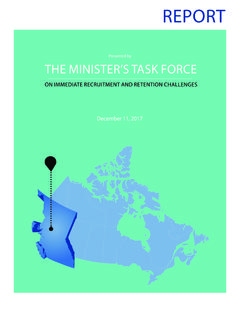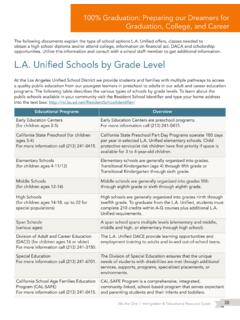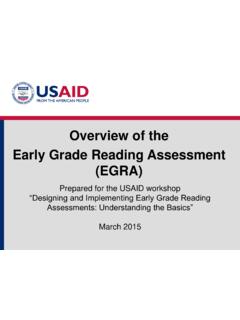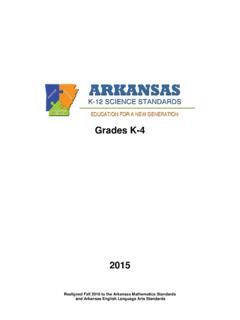Transcription of ENGLISH LANGUAGE LEARNING (ELL) STANDARDS 2017
1 ENGLISH LANGUAGE LEARNING (ELL) STANDARDS 2017 3 Table of Contents Acknowledgments .. 4 Introduction to the ELL STANDARDS .. 4 Organization of the 5 Using the 6 Policy 7 Literacy and the 8 Principles of Effective Additional LANGUAGE LEARNING .. 9 The STANDARDS and ESD Students .. 9 Primary .. 11 ELL Matrix: Primary Writing .. 12 ELL Quick Scale: Primary Writing .. 14 ELL Matrix: Primary Reading .. 16 ELL Quick Scale: Primary Reading .. 18 ELL Matrix: Primary Oral LANGUAGE .. 20 ELL Quick Scale: Primary Oral LANGUAGE .. 22 Intermediate .. 24 ELL Matrix: Intermediate Writing .. 25 ELL Quick Scale: Intermediate Writing .. 27 ELL Matrix: Intermediate Reading .. 29 ELL Quick Scale: Intermediate Reading .. 32 ELL Matrix: Intermediate Oral LANGUAGE .
2 34 ELL Quick Scale: Intermediate Oral LANGUAGE .. 36 38 ELL Matrix: Secondary Writing .. 39 ELL Quick Scale: Secondary Writing .. 41 ELL Matrix: Secondary Reading .. 43 ELL Quick Scale: Secondary Reading .. 46 ELL Matrix: Secondary Oral LANGUAGE .. 48 ELL Quick Scale: Secondary Oral LANGUAGE .. 50 Appendix A: ELL Supports and Strategies by Level .. 52 Explicit LANGUAGE Instruction .. 52 Differentiation .. 53 Culturally Responsive Practices .. 53 Resources .. 54 Appendix B: Glossary of Terms .. 55 4 ENGLISH LANGUAGE LEARNING (ELL) STANDARDS 2017 Acknowledgments The Ministry of Education would like to acknowledge the educators and groups who helped to develop the August 2015 draft document, ENGLISH LANGUAGE LEARNING STANDARDS . The draft document served as the foundation and provided significant groundwork for the development of this resource.
3 In some instances, material from Alberta K-12 ESL Proficiency Benchmarks (Government of Alberta, 2010) and material from Alberta K-12 Instructional Supports for Supporting ENGLISH LANGUAGE Learners (Government of Alberta, 2012), the Common European Framework of Reference for Languages (CEFR, Council of Europe, 2001) and the PreK-12 ENGLISH LANGUAGE Proficiency STANDARDS (TESOL, 2006) has been adapted for inclusion in the present publication. The Ministry would also like to thank the members of the 2016 ELL STANDARDS Working Group, who compiled and revised the material contained in this resource: Karen Beatty Sc hool District #35 (Langley) Sylvia Helmer University of British Columbia Ann Hunter School District #39 (Vancouver) Daphne McMillan School District #40 (New Westminster) Ida Ollenberger School District #40 (New Westminster) Dale Shea School District #43 (Coquitlam) Ann Thorup School District #41 (Burnaby) Diane Tijman University of British Columbia Denise Wehner School District #61 (Greater Victoria) Maria Yioldassis School District #45 (West Vancouver) Thanks is also extended to the individuals who provided reviews of various drafts and suggestions for improvement.
4 Introduction to the ELL STANDARDS The ENGLISH LANGUAGE LEARNING (ELL) STANDARDS are descriptions of characteristics that K-12 ENGLISH LANGUAGE learners typically exhibit at the various stages of their LANGUAGE LEARNING process. They are founded upon the knowledge and experience of ELL educators, as reflected in literature from different educational jurisdictions and interpreted by representative BC practitioners. The ELL STANDARDS : complement the various approaches school districts have developed for planning and carrying out ongoing ELL student support, including assessment and classroom adaptations; provide common LANGUAGE for describing LANGUAGE proficiency among schools and school districts for potential clarity and consistency throughout the province; facilitate communication with ELL students and their parents; and encourage collaboration among all educators regarding the ELL students LANGUAGE proficiency and support needs.
5 It will be useful to understand the following terms used throughout this document. continuum (continua): a set of expectations across a sequence of LANGUAGE proficiency levels that constitutes one piece of the ELL STANDARDS ; ELL Matrix: Secondary (8-12) Reading is one piece / continuum; t here are 18 continua total in the ELL STANDARDS . matrix (matrices): a full continuum that contains detailed descriptors of LANGUAGE proficiency across levels ; there are 9 matrices in the ELL STANDARDS . quick scale(s): a summary continuum that contains examples of the LANGUAGE proficiency descriptors; there are 9 quick scales in the ELL STANDARDS . descriptor(s): a phrase that describes identifying characteristics of a student relating to their LANGUAGE proficiency. aspect(s): a feature of LANGUAGE or literacy to which the descriptors in that particular row relate.
6 Level(s): a position on a continuum in which identifying students would exhibit similar characteristics of LANGUAGE proficiency; there are five levels represented in the ELL STANDARDS . skill domain(s): a sphere of LANGUAGE relating to a particular LANGUAGE skill; there are three skill domains represented in the ELL STANDARDS . ENGLISH LANGUAGE LEARNING (ELL) STANDARDS 2017 5 Although similar to the BC Performance STANDARDS , the ELL STANDARDS are distinct in one main way. They are based on LANGUAGE proficiency descriptors, rather than on provincial LEARNING STANDARDS from the modernized curriculum. Students who receive ELL support are, by definition, needing explicit and specific LANGUAGE support to access the curriculum of content-areas (such as ENGLISH LANGUAGE Arts, Social Studies, Mathematics, Science, etc.)
7 At their grade level. Most often this support should be delivered in the context of the regular classroom environment. The ELL STANDARDS document is meant to be used by educators as a tool to help support ELL students in accessing the provincial curriculum and succeeding in the academic environment. See ELL Policy Guidelines for more information on ELL students and inclusion. Organization of the STANDARDS The ELL STANDARDS are organized into continua (which includes matrices and quick scales ). Often the same continuum will extend on to a second or third page in this document. There are separate continua for each of the following LANGUAGE skills: Reading (and viewing), Writing (and representing), and Oral LANGUAGE . For Oral LANGUAGE , the descriptors pertaining to both receptive skills (listening) and expressive skills (speaking) are included on a single continuum.
8 Taking into consideration that LANGUAGE proficiency characteristics and expectations will differ as a student advances through the grades, a separate set of continua has been developed for each of the following age groups: Primary (Kindergarten to grade 3), Intermediate (grade 4 to grade 7), and Secondary (grade 8 to grade 12). Please note that there are no Reading or Writing continua for Kindergarten students, as there are limited expectations regarding reading and writing skills for all students until they enter grade 1. Together, the descriptors within the ELL STANDARDS address the breadth of LANGUAGE proficiencies and interrelated cognitive and academic development found among K-12 ELL students. Districts across British Columbia organize their schools in a variety of grade groupings; though there are grades specified on the ELL STANDARDS Primary, Intermediate and Secondary continua, it is purposefully and intentionally flexible as to which continuum an educator should use for a particular student, exercising their professional judgement.
9 Each continuum uses a five-level scale, reflecting current academic research on LANGUAGE acquisition, and many existing ELL practices across BC and other provinces in Canada. Five levels provide: more detailed information and fine-grained descriptors for diagnostic purposes; an extended scale to track a student s progress further toward full competence, right at their grade level; a better recognition of differences in LANGUAGE proficiency and development at lower levels ; and further consistency across the province in programs and support for ELL students. The levels are: Beginning (1) the student is in the beginning stages of LANGUAGE development, Developing (2) the student is showing progress in developing their LANGUAGE skills, Expanding (3) the student is expanding in their LANGUAGE development to further access classroom LEARNING outcomes, Consolidating (4) the student is consolidating their LANGUAGE skills in the academic environment, and Bridging (5) the student is bridging to the grade-level LANGUAGE proficiency of their peers.
10 Note that these levels are across a continuum of LANGUAGE proficiency and educators should consult with colleagues and use professional judgment in interpreting and applying the leveled system. 6 ENGLISH LANGUAGE LEARNING (ELL) STANDARDS 2017 It is useful to note the following: The amount of time required to progress from one level to the next will vary from one student to another. - LANGUAGE LEARNING is a complex and gradual process; progress varies in pace and can include apparent regression as well as improvement. Consequently, a level as described in this document does not equate to a year of schooling ( a student may spend more than a year or less than a year to exhibiting characteristics of a particular level). - It is not possible to compress the time it takes to improve in LANGUAGE proficiency simply by devoting more hours to study.

